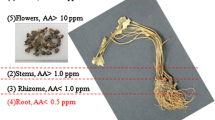Abstract
The concept of Good Manufacturing Practice (GMP) is well known to every pharmaceutical company in the world. Many countries express GMP in regulations, codes, and guidelines. In this era of worldwide herbal drug revolution, there is a need to implement GMP in the production of medicinal products from natural resources (herbal drugs). In addition to the widespread use of phytomedicine in developing countries for historical and cultural reasons, developed countries have been increasingly using alternative and complimentary medicine for their potential therapeutic efficacy. To meet the worldwide demand for herbal drugs, it is essential to maintain GMP. GMP for herbal drugs covers their cultivation in the field to their preparation in different formulations with the crude powder, the extract, or purified components.
The objectives of GMP for herbal drugs are generally stated in terms of desired achievements in several areas of manufacture and control, including cultivation and collection. India has a wide biodiversity and many herbal drugs from different regions constitute a major part of the health care system. GMP for herbal drugs in India is necessary for quality control of the production and development of herbal drugs, which includes primarily specific courses of action or the procedures to be followed in almost all steps of herbal drug production.
Similar content being viewed by others
References
World Health Organization. Good Manufacturing Practices for Pharmaceutical Products. WHO Technical Report Series. Geneva, Switzerland: World Health Organization; 1992:14–79.
World Health Organization. Regulatory Situation of Herbal Medicine. World Wide Review. Geneva, Switzerland: World Health Organization; 1998:1–5.
DeSmet PAGM. Should herbal medicine like products be licensed as medicine? Br Med J. 1995:310:1023–1024.
World Health Organization. Good Manufacturing Practices Supplementary Guidelines for the Manufacture of Herbal Medicinal Products. WHO Technical Report Series. Geneva, Switzerland: World Health Organization; 1996:863:109–113.
Mukherjee PK. Evaluation of Indian traditional medicine. Drug Inf J. 2001;35(2):623–632.
Anonymous. GMP for Ayurveda, Siddha, Unani (ASU) medicines. IDMA Bulletin. 2000;31(27):612–620.
World Health Organization. Guidelines for the Assessment of Herbal Medicine. WHO Technical Report Series. Geneva, Switzerland: World Health Organization; 1996:863:178–184.
Mukherjee PK, Shau M, Suresh B. Indian herbal medicine. Eastern Pharmacist. 1998;42(8):21–24.
Patwardhan B. Ayurveda: the designer medicine. IDMA Bulletin. 2000:31(27):626–631.
Author information
Authors and Affiliations
Corresponding author
Rights and permissions
About this article
Cite this article
Mukherjee, P.K. Problems and Prospects for Good Manufacturing Practice for Herbal Drugs in Indian Systems of Medicine. Ther Innov Regul Sci 36, 635–644 (2002). https://doi.org/10.1177/009286150203600318
Published:
Issue Date:
DOI: https://doi.org/10.1177/009286150203600318




